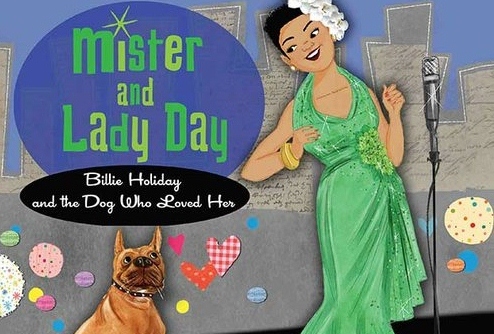Foundling Family Book Review – Issue 3
By Foundling friend, Celia McGee
Ages 3-5
Gus the Dinosaur Bus, by Julie Liu. Illustrated by Bei Lynn. (Houghton Mifflin)
The Dinosaur Tooth Fairy, by Martha Brockenborough. Illustrated by Israel Sanchez. (Arthur A. Levine/Scholastic)
Chick-O-Saurus Rex, by Lenore and Daniel Jennewin (Simon & Schuster)
These three books offer off-beat stories about some of the greatest creatures that roamed the earth, tailor made for little ones.
Gus the Dinosaur bus is this best possible school bus—no taking the elevator to board on the ground floor, for instance—until certain things start to get in the way. Like when he forgets about his tale and swings it in the middle of traffic, or that not every bridge can hold up “when you weigh as much as five elephants.” Put out to pasture next to his school, he cries big, fat dinosaur tears. And it’s these that bring the happy ending. Just read the book with its playful pictures and you’ll soon see how.
The dinosaur tooth fairy, on the other hand, lives deep in the bowels of a museum some might gleefully think resembles The American Museum of Natural History. She is happy with her collection of toothy, towering treasures. But one day she develops a longing for the wobbly tooth of a little girl visitor, and follows her home. But all isn’t easy in a human house for a dinosaur tooth fairy, until she encounters another visitor. Just as in children’s lives, friendship between tooth fairies is a cause for celebration.
Now, when Little Chick gets excluded from the fun-filled tree house on his farm by all the bigger animals, it’s sad and unfair. But what he lacks in size he makes up for in smarts, resolve and resilience, especially when his father comes to the rescue with an interesting tid-bit about his family tree. It turns out this modest chick is descended—you guessed it—from a Tyrannosaurus, and he has an archaeological dig to prove it. Even the big bad wolf can’t stand up to Chick-O-Saurus Rex. Newfound courage and unexpected knowledge win him just the kind of acceptance he had hoped for.
Ages 4-8
Mister and Lady Day:Billie Holiday and the Dog Who Loved Her, by Amy Novesky. Illustrated by Vanessa Brantley Newton (Harcourt Children’s Books)
The incomparable blues singer Billie Holiday lived a glamorous life but also a tragic one. The saddest notes affecting this African American icon are kept off-stage in this touching book about Ms. Holiday, who was a fervent dog-lover, and her favorite, “a boxer named Mister,” who stood by her in good times and bad. On the way to meeting Mister we encounter a lavish assortment of Lady Day’s other pooches, from Chihuahuas to beagles, poodles and Great Danes, whom she proudly paraded around dressed in her finest, another known grace note. At her lowest, though, Mister was there for her, and in this elegant picture book about steadfastness and loyalty, he helps her to accomplishments that have gone down in history.
Ages 6-10 and all ages
Barbed Wire Baseball, by Marissa Morse. Illustrated by Yuko Shimuzu (Abrams)
Yuko Shimuzu’s extraordinary illustrations, which evoke Japanese woodcuts crossed with 1940s American Scene painting, immediately signal that this is no run-of-the-mill baseball story. Mixing history and sports, Barbed Wire Baseball follows the successful and real-life Japanese-American baseball player Kenichi “Zeni” Zenimura as he defies many odds—not the least of which is his short stature and parents who would’ve preferred he be a doctor or lawyer—to become a well-known player and manager, playing exhibition games with the likes of Babe Ruth and Lou Gehrig. But after the Japanese invaded Pearl Harbor, Japanese and Japanese-Americans on American soil were herded into internment camps, surrounded by barbed wire, and Zenimura’s hardest challenge began. This was to build not only a first-rate baseball diamond at the Gila River War Relocation Center in Arizona, where he was detained, but to gather and train baseball players, uniforms, equipment and all, to instill a sense of pride, hope, self-confidence and joy in a community unfairly brought low. Everyone played a part, and each of those roles is now happily commemorated in the form of this book.
Ages 8 and up
The 13-Story Treehouse, by Andy Griffiths. Illustrated by Terry Denton. (Feiwel& Friends/Macmillan)
If it’s pure zaniness you want—sprinkled with science, world history, astronomy, and a little rock ‘n roll—then climb right up into the 13-story treehouse created by the inventive Australian duo of Andy Griffiths (already a New York Times best-selling author) and Terry Denton. Planted somewhere between fantasy and reality, their tree-born existence is all for giggles and laughs, but their silliness simultaneously reminds young people always to be on the lookout for the foolish, the rash, and unrealistic, hasty decisions. Andy and Terry’s household includes a marshmallow-shooting machine, a bowling alley, a shark tank, swinging vines and a secret underground laboratory. When Terry places an ill-advised order for sea-monkey eggs, or catches himself in his own giant bubble-gum bubble, both domestic devices and quick-wittedness must come to rescue. At the same time, these guys have to finish a book on time for their big mean publisher. Three guesses which book it is.
Ages 10 and up
What We Found in the Sofa and How It Saved the World, by Henry Clark. (Little, Brown)
Next time you see an abandoned sofa, you might want to give it a second glance.
That’s what the three friends River, Freak and Fiona do when they find an old wreck by their school bus stop one day, and they wisely hunt around among the cushions, too. Among the last inhabitant of Hellsboro, where a chemical plant malfunction has left most of the their blue-collar area festering atop an underground fire, these kids can sometimes be down on themselves, and each other, but the revelations of the sofa—and Henry Clark’s dry, humorous writing style—start to change all that. An evil industrialist is plotting to take over the world from another dimension where he has already enslaved the population, but with the help of his rebellious son, some tricks with physics, oddly-shaped balloons and the sofa’s futuristic powers, the kids could save the day. After that, coming to terms with high school will be a piece of cake.
For grownups, and ages 13 and up
Visitation Street, by Ivy Pochoda. (Ecco)
It is no surprise that Dennis Lehane chose this as the second title for his new line of books. A thriller set in an all-too-real yet lyrical Red Hook, the murder mystery revolves around two 15-yer-old girls, best friends since childhood, who one bored summer night decide to take an inflatable raft out on the East River’s treacherous waters. Val survives, June disappears. Their Red Hook is sharply divided along class, ethnic and racial lines, and freshly slicing gentrification adds to the tensions that surface as the hunt for June goes on. Italian-American Val must come to terms with her feelings for Cree, a young African American, as well as her music teacher at St. Bernadette’s, a traumatized alcoholic. A Lebanese bodega owner works to keep the peace, and a family of women with spiritual powers chip in. Pochoda’s portrait of a classic New York neighborhood is memorable, from sad sacks to artists to quiet heroes, just enough of them making up a kind of new family that holds promises for a new day for Val, and her quest for June.






